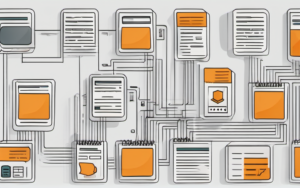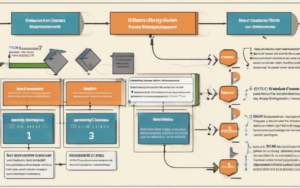The rise of digital payments has revolutionized the way we transact, offering convenience and speed compared to traditional methods. However, traditional payment systems often face limitations in terms of security, cost, and efficiency. Enter blockchain, a disruptive technology with the potential to transform digital payments and address these shortcomings. Blockchain payments are poised to redefine the financial landscape, offering a secure, transparent, and efficient way to transfer value.
Introduction
The Rise of Digital Payments
Digital payments have become increasingly popular, driven by the widespread adoption of smartphones, the internet, and e-commerce platforms. Consumers now prefer the convenience and speed of online payments over traditional methods like cash or checks. This shift has led to the emergence of various digital payment solutions, including online payment gateways, mobile wallets, and digital currencies.
The Limitations of Traditional Payment Systems
Despite the growth of digital payments, traditional payment systems still face several limitations. Centralized systems are vulnerable to security breaches and fraud, and transaction fees can be high, especially for cross-border payments. Furthermore, these systems often lack transparency and can be slow and inefficient.
Blockchain: A Disruptive Technology
Blockchain technology presents a potential solution to these limitations. It offers a decentralized, secure, and transparent platform for recording and verifying transactions. This innovative technology has the potential to revolutionize various industries, including finance, and has already begun to disrupt the traditional payment system.
Blockchain Fundamentals
Decentralization and Transparency
Blockchain is a decentralized ledger, meaning it is not controlled by a single entity. Instead, it is distributed across a network of computers, ensuring that there is no single point of failure. This decentralized nature makes it resistant to manipulation and censorship, promoting transparency and trust in the system.
Cryptography and Security
Blockchain uses advanced cryptography to secure transactions. Each block in the chain is encrypted and linked to the previous block, making it extremely difficult to alter or tamper with data. This ensures the integrity of the information stored on the blockchain and enhances the security of transactions.
Smart Contracts and Automation
Smart contracts are self-executing agreements written in code and stored on the blockchain. They automate transactions based on pre-defined conditions, eliminating the need for intermediaries and reducing the risk of human error. This automation streamlines the payment process, making it faster and more efficient.
Blockchain’s Impact on Digital Payments
Enhanced Security and Trust
Blockchain’s decentralized and cryptographic nature enhances the security of digital payments. By eliminating a central authority, it reduces the risk of fraud and hacking. Furthermore, the immutable nature of the blockchain ensures that transaction records are tamper-proof, fostering trust and accountability.
Reduced Transaction Costs
Blockchain can significantly reduce transaction costs, particularly for cross-border payments. By eliminating intermediaries and automating processes, it streamlines the payment process, lowering fees and making it more cost-effective.
Faster and More Efficient Transactions
Blockchain transactions are generally faster than traditional payment methods. The decentralized nature of the blockchain allows for faster processing and confirmation of transactions, reducing delays and improving efficiency.
Increased Financial Inclusion
Blockchain can improve financial inclusion by providing access to financial services for underserved populations. Its decentralized nature allows for the creation of peer-to-peer payment systems that are accessible to individuals without traditional bank accounts.
Real-World Applications of Blockchain in Payments
Cryptocurrencies and Digital Assets
Cryptocurrencies like Bitcoin and Ethereum are built on blockchain technology, enabling secure and decentralized transactions. These digital currencies have gained significant traction, offering alternative payment methods and investment opportunities.
Cross-Border Payments
Blockchain can streamline and reduce costs for cross-border payments. By eliminating intermediaries and providing a secure and transparent platform, it facilitates faster and more efficient transactions between different countries.
Supply Chain Finance
Blockchain can enhance supply chain finance by providing a transparent and secure platform for tracking goods and payments. This improves efficiency, reduces fraud, and enables faster payments between parties involved in the supply chain.
Micropayments and the Internet of Things
Blockchain’s ability to handle small transactions makes it suitable for micropayments, enabling new business models in the Internet of Things (IoT). This opens up possibilities for automated payments for services like smart home devices, online content, and digital subscriptions.
Challenges and Future Directions
Scalability and Performance
One of the key challenges facing blockchain technology is scalability. As the number of transactions increases, the blockchain can become congested, leading to slower processing times and higher transaction fees. Research and development efforts are focused on addressing these scalability concerns.
Regulatory Uncertainty
The regulatory landscape for blockchain technology is still evolving. Governments and regulators are working to establish clear frameworks for blockchain-based payments, which can create uncertainty and hinder adoption.
User Adoption and Education
Widespread adoption of blockchain payments requires user education and awareness. Many users are unfamiliar with blockchain technology and its potential benefits, requiring clear and accessible information to foster adoption.
Interoperability and Standardization
The lack of interoperability and standardization between different blockchain platforms poses a challenge for wider adoption. Efforts are underway to create common standards and protocols to facilitate seamless transactions between various blockchains.
Blockchain’s Transformative Potential
Blockchain payments have the potential to revolutionize the financial landscape, offering a secure, transparent, and efficient way to transfer value. Its ability to address the limitations of traditional payment systems makes it a promising technology with significant implications for the future of finance.
The Future of Digital Payments
As blockchain technology continues to mature and gain wider adoption, it is likely to play a crucial role in shaping the future of digital payments. Its impact on security, efficiency, and financial inclusion makes it a transformative force with the potential to reshape the way we transact. The future of digital payments is likely to be driven by innovation, collaboration, and the ongoing development of blockchain-based solutions.




